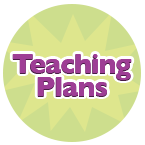- Early childhood classrooms develop a climate and a context that support language learning through play, experimentation, story reading, centre explorations, singing, discussions, and other activities that promote active listening and talking. The following Oral Language Teaching Strategies, emphasized in the program, can be used during whole-class, small-group, or individual communications and can be woven into conversations and discussions during any activity.
Note: Varying groupings (whole class, small group, partners, individuals) allows you to meet a wide range of student’s language learning needs as you can communicate with many, a few, or individual students.
- Each strategy is intended to stimulate, expand, or refine aspects of language development, including the non-verbal aspects of social communication (e.g., making eye contact with the speaker).
- You may already use many of these strategies in your classroom and this list will serve as a reminder and confirmation. Some strategies may be new to you. If so, select one and emphasize it during a lesson to try it out. With repeated use it will become part of your overall strategy repertoire.
- An Oral Language Teaching Strategy has been suggested for use in each lesson. That may be the time to emphasize it, or practise using it. Of course, you will want to combine it with other successful strategies you already use.
Oral Language Teaching Strategies |
1. USE OPEN-ENDED PROMPTS
|
2. MODEL EYE CONTACT WHEN LISTENING Support good listening by noticing it and commenting on it, for example, “I noticed Rahim was looking at Andy’s face when he was talking. It’s important to look at people when they are talking as it shows you are listening to them.” |
3. CONNECT WITH THE STUDENT’S MESSAGE
|
4. MODEL GOOD LANGUAGE USE
|
5. EXTEND AND CHECK THE MEANING
|
6. ENCOURAGE PARTNER TALK (e.g., Turn and Talk) |
7. PROMOTE PIGGY-BACKING
|
8. ROLE-PLAY: EXPLORE OTHER PEOPLE’S VIEWPOINTS
|
9. DISAGREE AGREEABLY
Help them to disagree in discussions, too. For example,
|
10. OFFER PROMPTS AND FRAMEWORKS TO RELUCTANT TALKERS Teaching Tips:
|
